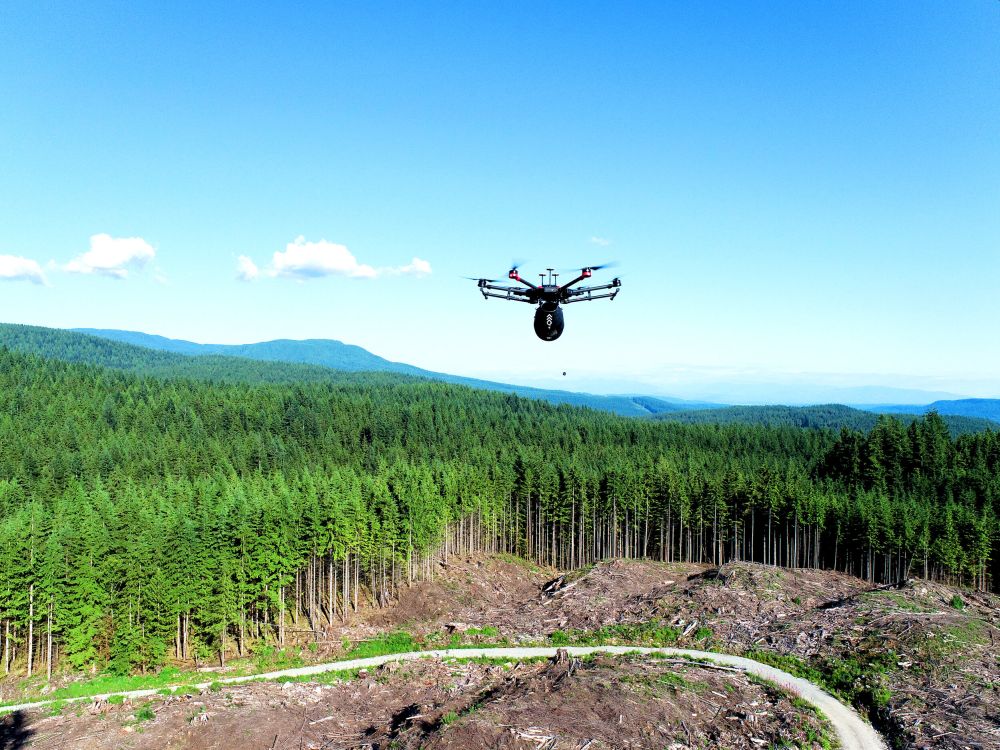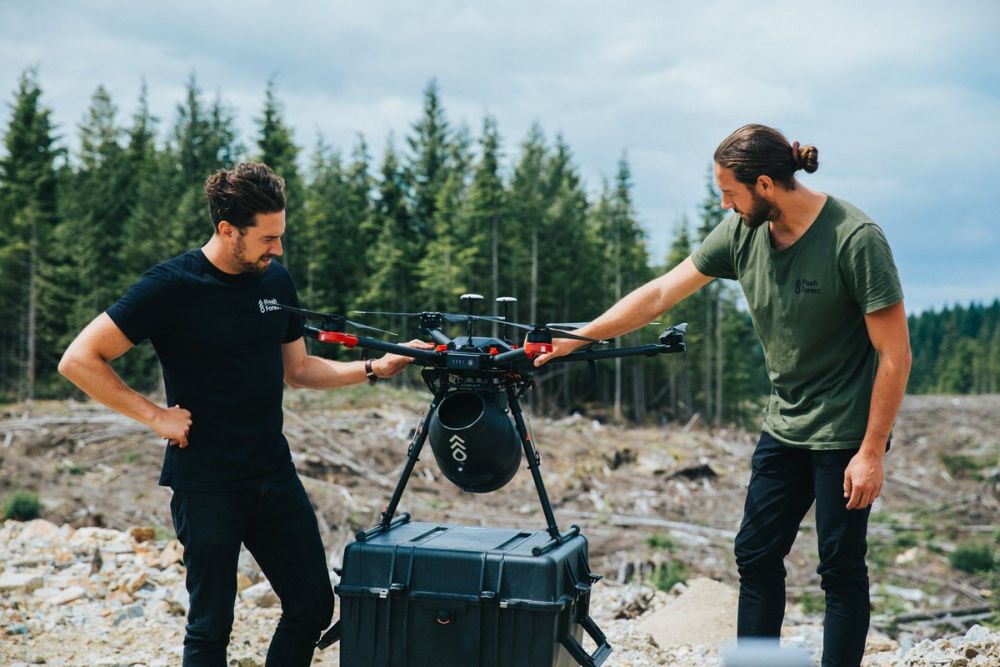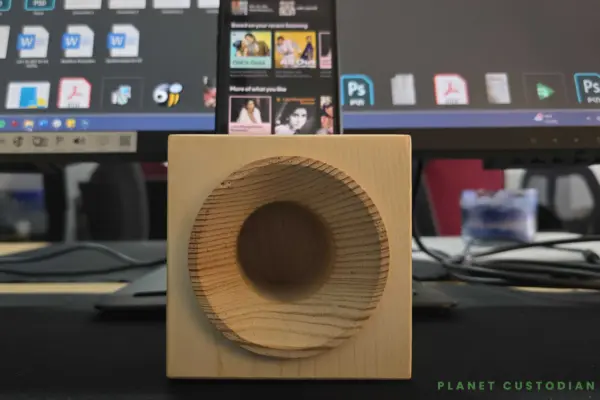Flash Forest’s Tree-Planting Drones to Help Automate Reforestation
The timber industry has developed and became skilled at efficient harvesting technologies, capable of quick clearing with minimal human involvement; whereas the planting, on other hand, is still functioning with bags and shovels, moving at a much slower pace than tree-cutting. To rectify this situation, Flash Forest’s tree-planting drones are thriving to plant a billion trees by 2028.
Flash Forest – a Canadian reforestation company, which uses unmanned aerial vehicle (UAV) hardware, aerial mapping software, automation, and biological seed-pot technology to reforest areas at a quick rate. The startup aims to plant at 10 times the normal rate and at a fraction of the cost of traditional tree planting ways.

Image: Flash Forest
With tree-planting drones, the company has been planting about 10,000 to 20,000 seed pods a day. According to the company, with the advancement of technology, a pair of pilots will be able to plant 100,000 trees in a day. Flash Forest plans to lower the cost down to 50 cents per tree, or around a fourth of the cost of some other tree restoration efforts.
I think that drones are absolutely necessary to hit the kind of targets that we’re saying are necessary to achieve some of our carbon sequestration goals as a global society. It allows you to get into trickier areas that human planters can’t…We work with local seed banks and also take into account that the different changes that climate change brings with temperature rise, anticipating what the climate will be like in five to eight years when these trees are much older and have grown to a more mature stage, and how that will affect them
said Flash Forest co-founder and chief strategy officer, Angelique Ahlstrom.

Image: Flash Forest
The company first sends mapping drones to survey the area, using software to recognize the best places to plant, based on the soil type and existing plant species. Then, a group of drones starts to drop seed pods, packed in a proprietary mix that the company says initiates the seed germination weeks before they otherwise would have. The seed pods are also designed to retain moisture, therefore seedlings can survive for months, even under circumstances of drought.
Flash Forest’s tree-planting drones do not just drop the seedlings and leave them be. The company plans to keep a check on the seedlings when they are a few months old, then a year or two, then three to five years old. If the saplings survive up till then, they won’t need further nurturing and will eventually take care of themselves.
The success of this project can allow the environment to heal itself, consequently, slowing the rate of global warming and changing climatic patterns.


